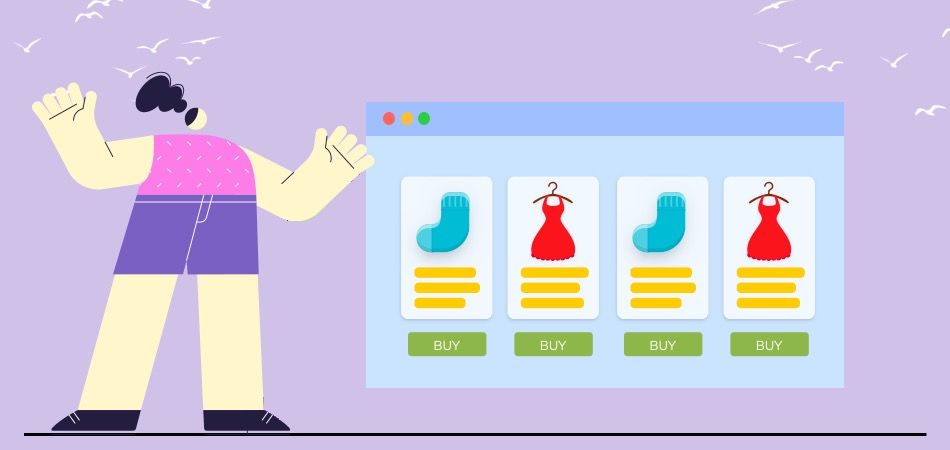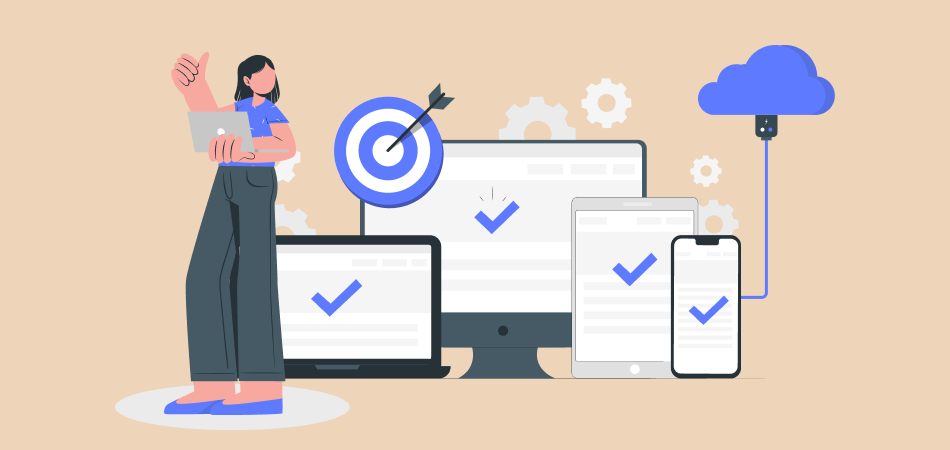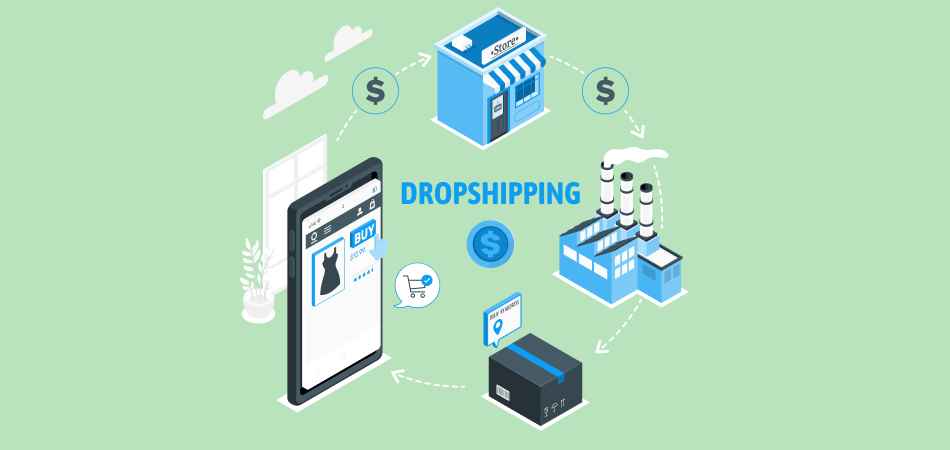How to Start an Online Store without Inventory: 2024 Guide

Updated by March 18,2024
Do you want to launch an online business? Do you believe you possess the necessary skills to manage a prosperous online store? Starting an online commerce business may be expensive and complicated.
There is a fantastic solution for this issue that you might not be aware of. It's creating an online store without inventory. In this article, let’s cover all you need to know about how to start an online store without inventory.
Can You Start an Online Store without Inventory
Choosing what to offer is one of the most challenging parts of beginning a business for many newcomers to eCommerce. This frequently causes tension and anxiety since picking the incorrect product might result in enormous financial losses. With so many solutions out today that need little to no upfront inputs, or in other words, zero inventory, this issue has thankfully been solved. This enables beginning business owners to try various products and ideas without committing.
You did hear it here first, after all! Without any stock, you may launch an online business. You won't require much time or money to complete the instructions in this post, nor will you need to select a storage facility or make an upfront payment.
Pros and Cons of Running an Online Store without Inventory
Before committing to any business strategy, it is crucial to comprehend it and weigh its advantages and disadvantages.
Running an online store without inventory has several advantages:
- Low overhead costs: The overhead costs of running a firm, or overhead, are incredibly cheap. This is due to eliminating the operating expenses associated with keeping an inventory.
- More profit for the retailers: Eliminating overhead expenses will also increase profits. If you're storing the products, you'll need someone to take care of them and monthly rent payments. These costs are easily avoidable. The retailers will make more money as a result.
- Better experience for employees: No inventory implies less tedious effort in maintaining specific businesses, such as arranging and replenishing shelves.
- Value for your customers: Retailers can fully concentrate on the consumer and give them the most excellent in-store experience by removing unnecessary inventory.
Before beginning any business, the seller must know the benefits and drawbacks.
- Lack of control over stock: Lack of inventory might be problematic when there is an urgent order since there is no inventory to keep track of the old and new products.
- Lack of control over the product quality: It's crucial to check the product's quality. However, this concept lacks this essential step. Losing this management and quality control implies having an internet business without inventory.
- Uncontrollable customer experience: A brand or vendor has very little control over the products you give in exchange for selling them.
4 Methods to Start Online Store without Inventory
Let's examine some of the most often used strategies for starting an online business without stock or mountains of unsold products. Until you discover the best match, you can test out as many products or ideas as you like without any cost consequences.
1. Dropshipping
Most individuals choose dropshipping because of how much power and flexibility it gives them. This technique enables anyone, regardless of expertise level, to operate an online store without spending a fortune on products.
| Get Started Now to Grow Your Online Business with the Best AliExpress Dropshipping Tool - DSers! |
You don't need to stress creating shipping labels or packing your products for delivery. Suppliers take their share once the order is filled, and you take your share. It's that easy!
2. Print on Demand
Dropshipping and print-on-demand may be highly comparable. Under the print-on-demand approach, you may utilize the many platforms to handle any step of the order fulfillment procedure, just as with dropshipping.
With this business strategy, you'll link your online store to a print-on-demand company that will produce your customized products using whatever design you supply. For individuals with promising design talents, this is a fantastic alternative, but you can also decide to outsource your plans if you'd prefer.
3. Affiliate Store
Because it can be so convenient and easy, with most of the work falling on the large-scale firm you choose to deal with, this is a common way to sell things without retaining stock.
With affiliating, you will advertise someone else's tried-and-true products with the hope of earning a commission when a sale is made. All you have to do is choose an affiliate business to partner with and begin marketing its products on your blog, social media accounts, or online store with no inventory.
4. Digital Products or Services
You might also attempt offering digital services like training programs or streaming services, or selling digital products like a particular design or eBook. When it comes to this unusual strategy of selling online without inventory, the sky is the limit. The most popular products that are successful with this strategy are copywriting, web design, and graphic design services.
You may advertise your own copywriting or graphic design firm on any platform you choose and include it in your marketing emails after you have a specialized service and a website in place. This makes it possible to avoid having to rent a space or buy or sell actual products.
7 Steps to Start an Online Store without Inventory
Let's look at how to construct an online store without inventory now that you are aware of the many models of online stores without inventory.
Step 1: Research and Choose Products to Sell
Product research is the first and possibly most crucial phase. You can locate the most outstanding in-demand products to add to your business by doing product research. You can consult various sites to find your possible items, including AliExpress, Amazon, eBay, …
Step 2: Choose a Supplier
You must locate a provider who has those products in stock after finding your winning products. The following elements should be taken into account while choosing a supplier:
- Minimum order quantity(MOQ): Does the vendor have a minimum order quantity?
- Product niche: What types of products does the provider offer?
- Pricing: Does the vendor give deals and reasonable prices?
- Payment methods: What forms of payment does the vendor accept?
- Shipping and delivery time: How quickly does the provider ship out orders?
- Shipping carriers: Which business does the supplier employ to ship its goods?
- Return policy: What rules apply to product exchanges and refunds?
Collaboration with several suppliers is another factor in our success. Working with many suppliers gives you access to a broader range of products and more competitive markets. You may thus haggle overrates and get deals on our orders. Additionally, it's usually preferable to have a backup provider if one of our suppliers runs out of stock or experiences shipment delays.
Step 3: Decide Your Selling Channels
It's time to decide which selling channels to advertise your products on now that you have suppliers. Clients view your items through several sales channels. Marketplaces and eCommerce platforms are the two different categories of selling media.
eCommerce platforms enable you to use your domains to construct websites. By doing this, you may brand your business and raise brand recognition. You may quickly brand your business by selecting an eCommerce platform that offers various themes and simple design options.
Marketplaces with already-existing traffic include eBay and Facebook Marketplace. There is a reasonable probability that shoppers will see your business because marketplaces already have active users. Even if you cannot promote your stores as an eCommerce platform, you don't need to worry about driving traffic to your website because there is already organic traffic on the marketplaces.
It is up to you to decide which selling channel best suits you after weighing the advantages and disadvantages of each.
Step 4: Create Your Online Store
To list your items and begin selling them, you must set up an online store. As a result, you may build an online store on platforms like Wix, Shopify, eBay, and Facebook Marketplace. The following describes how to set up your internet business with several selling channels:
Steps to create a store on marketplaces like eBay/Facebook Marketplace:
- Step 1: Register for an account.
- Step 2: Import the product listings that you want to sell.
- Step 3: Shoppers will begin to check your store and purchase your products.
Steps to create a store on eCommerce platforms like Shopify/Wix
- Step 1: Register for an account on the eCommerce platform you choose.
- Step 2: Import your products to your online store.
- Step 3: Customize your website themes, logos, homepage, product pages, etc.
- Step 4: Publish your online store.
Step 5: Import Your Products
You must add products to your online store now that it is ready. Products can be added manually or automatically. Because you import each product individually, manual product imports take a long time. Contrarily, the automatic import procedure imports the items to our shop without the need to duplicate them one at a time.
You must import your items from your suppliers' websites to list them. There are many tools for importing products from eCommerce platforms. For example, with DSers (A popular AliExpress e-Commerce solution), you can automate the product importing process to save your time and effort. Using the DSers Import List, you can automatically import and manage all your products in one dashboard.
Step 6: Market Your Online Store
You already have a product-filled web store at this stage. To boost traffic and revenue, you must advertise your online store. You may produce more sales by promoting your products and increasing your profit margins. Starting an online store without inventory requires learning how to advertise your website.
Step 7: Order Fulfillment
Customers will surely visit your business to place orders if you use the proper marketing techniques. You must thus complete their requests as quickly as you can. By doing this, you may improve client satisfaction and foster a long-lasting connection.
You can choose between two techniques for completing orders: manual and automated. Manual fulfillment entails entering the customer's information on the supplier's website and placing the order for each order. Manual order fulfillment is not the most excellent method for your online store since it takes a long time and is laborious.
On the other hand, automated order fulfillment saves you time and effort by doing it for you using the software. You may instead spend your time working on growing your business. With that said, DSers offers us Auto Sync Tracking Numbers and Auto Update Order Status to automate your order fulfillment process.
Final Words
You should never be hesitant to launch your own online business! But “why do you need one, and how to start an online store without inventory?” is the question. When creating an online store, a seller or company owner occasionally lacks the funding to support their operations, impacting the labor available.
This is one of the numerous benefits of creating an internet shop without inventory. Discover more online business guides on DSers Blog.













 Company
Company
 Why Choose DSers
Why Choose DSers
 Blog
Blog
 Help Center
Help Center



